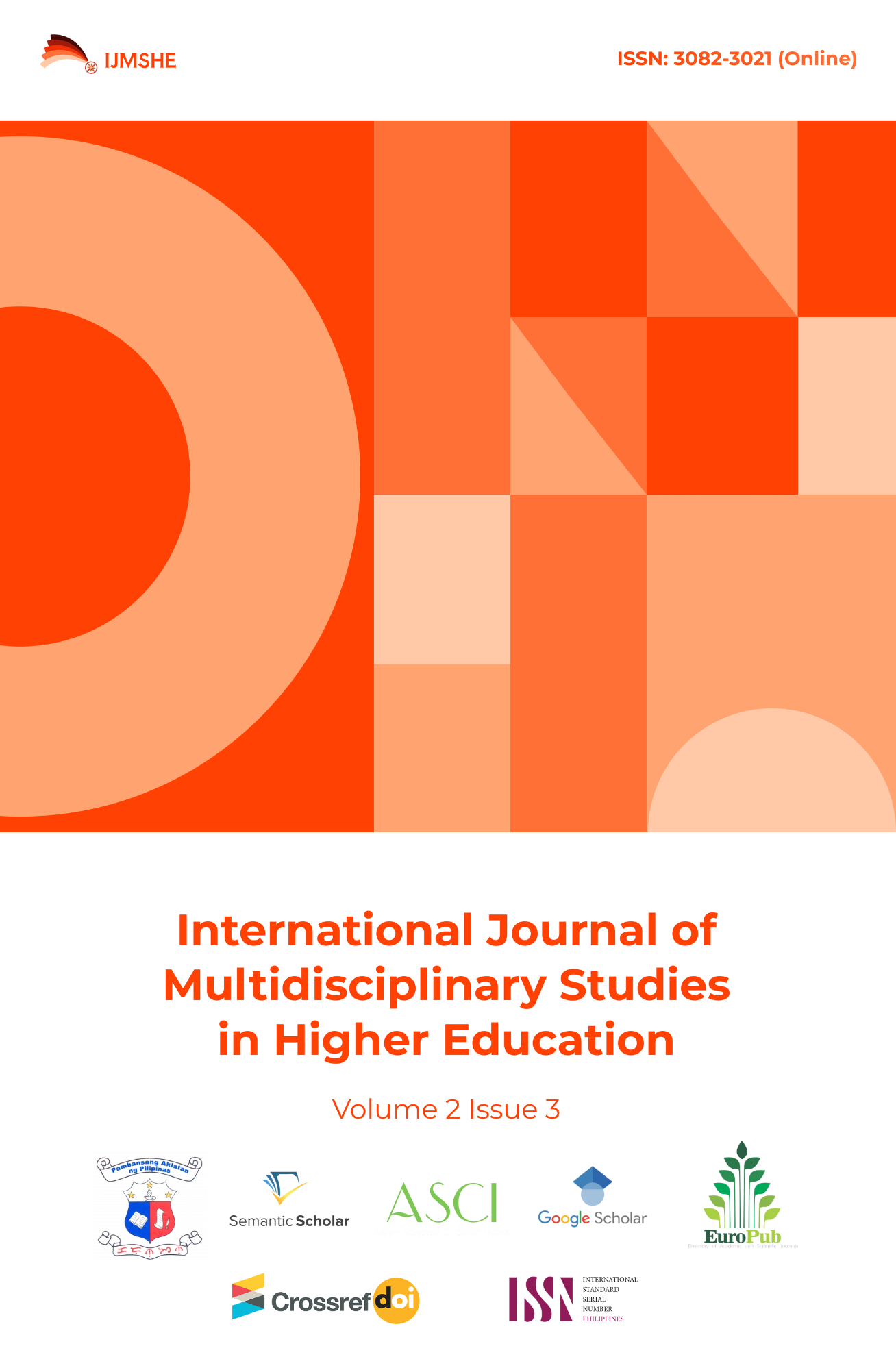Workplace Innovation and Knowledge Management as Predictors of Employee Performance in the Restaurant Industry of Davao City
Main Article Content
Abstract
With the contemporary competitive service industry, restaurants are using innovation and knowledge assets more to drive employee performance. Still, there are limited empirical studies in the Philippine foodservice industry on this aspect. This paper bridges the research gap by examining the impact of workplace innovation and knowledge management on the performance of rank-and-file restaurant employees in Davao City. Utilizing a quantitative correlational design, data were collected from 150 regular employees via a standardized survey instrument. Descriptive statistics described respondent characteristics, whereas Pearson correlation and multiple regression analyses tested the strength and predictive value of workplace innovation and knowledge management on performance outcomes. Outcomes indicated high positive correlations between worker performance and workplace innovation (r = .71, p < .05) and knowledge management (r = .75, p < .05). Regression analysis validated these variables as significant predictors, explaining 64.1% of the performance variation (R² = .641, F = 131.13, p < .001). The primary drivers were idea generation, knowledge sharing, and technical skill development, which were associated with increased productivity, flexibility, and job satisfaction. These results underscore the practical importance of cultivating innovative cultures and promoting robust knowledge-sharing practices to enhance workforce performance and organizational competitiveness in the restaurant industry.
Article Details

This work is licensed under a Creative Commons Attribution 4.0 International License.
References
Abubakar, A. M., Elrehail, H., Alatailat, M. A., & Elçi, A. (2017, October 21). Knowledge management, decision-making style, and employee performance. Journal of Innovation & Knowledge. https://doi.org/10.1016/j.jik.2017.06.001
Altinay, L., Brookes, M., Demarest, M., Griessmair, M., Guillet, B. D., Hallin, C. A., … Gupta, A. K. (2020). Influential Factors for Successful Knowledge Transfer in Restaurant Franchises. Journal of Hospitality and Tourism Management. https://doi.org/10.1016/j.jhtm.2020.06.005
Barney, J. B. (1991). Firm resources and sustained competitive advantage. Journal of Management, 17(1), 99–120. https://doi.org/10.1177/014920639101700108
Černe, M., Kaše, R., & Škerlavaj, M. (2022). Idea championing as a missing link between idea generation and team innovation implementation: A situated emergence approach. European Management Journal. https://doi.org/10.1016/j.emj.2022.08.003
Davenport, T. H., & Prusak, L. (1998). Working knowledge: How organizations manage what they know. Harvard Business Press.
Han, J., & Song, J. (2019). Does workplace innovation affect job satisfaction and job performance? The mediating role of learning orientation. Sustainability, 11(16), 4283. https://doi.org/10.3390/su11164283
Jankelová, N., Joniaková, Z., & Mišún, J. (2021). Innovative work behavior: A key factor in business performance? Journal of Risk and Financial Management, 14(4), 185. https://doi.org/10.3390/jrfm14040185
Ketchen, D. J., Short, J. C., Try, D., & Edwards, J. R. (2014). Resource-based theory. In Mastering Strategic Management (1st Canadian ed.). Open Textbooks for British Columbia.
Omotayo, F. O. (2015). Knowledge management as an important tool in organisational management: A review of literature. Library Philosophy and Practice, 1238. http://digitalcommons.unl.edu/libphilprac/1238
Özçelik, G. (2016). The role of organizational culture in the relationship between leadership and employee commitment. Procedia – Social and Behavioral Sciences, 229, 571–581. https://doi.org/10.1016/j.sbspro.2016.07.156
Perry-Smith, J. E., & Mannucci, P. V. (2017). From creativity to innovation: The social network drivers of the four phases of the idea journey. Academy of Management Review, 42(1), 53–79. https://doi.org/10.5465/amr.2016.0231
Shipton, H., Sparrow, P., Budhwar, P., & Brown, A. (2013). HRM and innovation: Looking across levels. Human Resource Management Journal, 23(3), 303–321. https://doi.org/10.1111/1748-8583.12006
Wu, C. H., & Lin, C. P. (2019). Knowledge embeddedness and knowledge sharing: A social network perspective. Journal of Business Research, 98, 175–184. https://doi.org/10.1016/j.jbusres.2019.01.060
Zhang, X., & Jiang, F. (2021). Knowledge transfer, teamwork, and team performance: The moderating role of task interdependence. Human Resource Management Review, 31(1), 100702. https://doi.org/10.1016/j.hrmr.2019.100702
Zhenjing, G., Chupradit, S., Ku, K. Y., Nassani, A. A., & Haffar, M. (2022). Impact of employees’ workplace environment on employees’ performance: A multi-mediation model. Frontiers in Public Health, 10, 913621. https://doi.org/10.3389/fpubh.2022.913621

